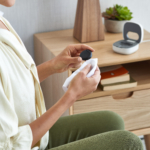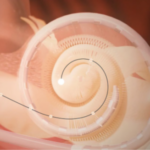We understand that as professionals working with children with hearing loss, it can be challenging to keep up with high-quality data that drives evidence-based decision-making to achieve optimal outcomes. That is why we created the Pediatric Evidence Summary for Cochlear Implants. This document outlines key insights from significant studies around the benefits of cochlear implants for pediatric recipients.† Topics include:
- The importance of early access to sound
- Simultaneous and sequential implantation
- Progress tracking and monitoring
- Social Communication

We strive to create strong relationships with our professionals and offer insights that enable you to provide the best care possible for your patients. We recognize that it takes a village to provide each child with a world of infinite possibilities, and we invite you to understand what the current industry standards are today and the evidence behind these standards. Please take a moment to read the Pediatric Evidence Summary for Cochlear Implants below:
We are excited to witness how this industry makes continued strides in maximizing each pediatric patient’s potential through continued studies in this area.
† In the United States, the Cochlear Nucleus Implant System is approved for use in children 9 to 24 months of age who have profound sensorineural hearing loss in both ears and demonstrate limited benefit from appropriate hearing aids. Children 2 years of age or older may demonstrate severe to profound hearing loss in both ears. In Canada, the Cochlear Nucleus Profile Plus (CI600) Series and Profile (CI500) Series Implant Systems are intended for use in children 9 to 24 months of age who have bilateral profound sensorineural deafness and demonstrate limited benefit from appropriate binaural hearing aids. Children 2 years of age or older may demonstrate severe to profound hearing loss bilaterally for both series of implants.
Views expressed are those of the individual. Consult your hearing health provider to determine if you are a candidate for Cochlear technology. Outcomes and results may vary.


